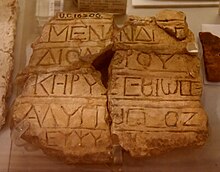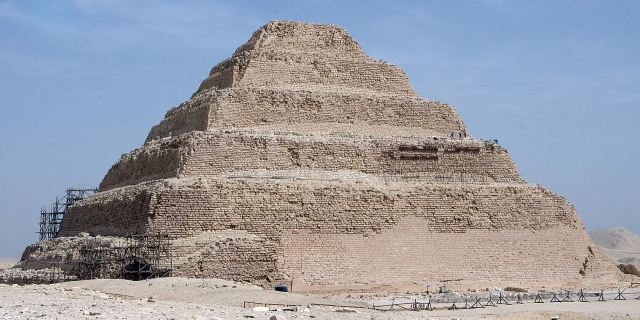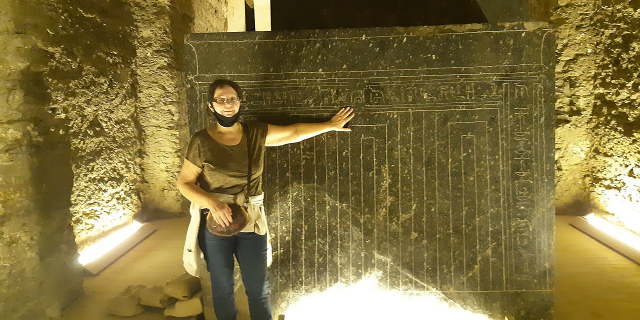هوارة المقطع
( Hawara )Hawara is an archaeological site of Ancient Egypt, south of the site of Crocodilopolis ('Arsinoë', also known as 'Medinet al-Faiyum') at the entrance to the depression of the Fayyum oasis. It is the site of a pyramid built by the Pharaoh Amenemhat III in the 19th century BC.
 The Pyramid of the 12th Dynasty Pharaoh Amenemhat III at Hawara, from the east.
The Pyramid of the 12th Dynasty Pharaoh Amenemhat III at Hawara, from the east. Labyrinth, fire altar. Part of a limestone frieze, model of lamps on a stand. 12th Dynasty. From Hawara, Fayum, Egypt. The Petrie Museum of Egyptian Archaeology, London
Labyrinth, fire altar. Part of a limestone frieze, model of lamps on a stand. 12th Dynasty. From Hawara, Fayum, Egypt. The Petrie Museum of Egyptian Archaeology, LondonAmenemhat III was the last powerful ruler of the 12th Dynasty, and the pyramid he built at Hawara is believed to post-date the so-called "Black Pyramid" built by the same ruler at Dahshur. This is believed to have been Amenemhet's final resting place. At Hawara there was also the intact (pyramid) tomb of Neferu-Ptah, daughter of Amenemhet III. This tomb was found about 2 km south of the king's pyramid.
In common with the Middle Kingdom pyramids constructed after Amenemhat II, it was built of mudbrick round a core of limestone passages and burial chambers, and faced with limestone. Most of the facing stone was later pillaged for use in other buildings— a fate common to almost all of Egypt's pyramids— and today the pyramid is little more than an eroded, vaguely pyramidal mountain of mud brick, and of the once magnificent mortuary temple precinct formerly enclosed by a wall there is little left beyond the foundation bed of compacted sand and chips and shards of limestone.
The huge mortuary temple that originally stood adjacent to this pyramid is believed to have formed the basis of the complex of buildings with galleries and courtyards called the "Labyrinth" by Herodotus; this building was also mentioned by Strabo and Diodorus Siculus. (There is no historicity to the assertion of Diodorus Siculus that this was the model for the labyrinth of Crete that Greeks imagined housed the Minotaur.)
The demolition of the "labyrinth" may date in part to the reign of Ptolemy II, under whom the Pharaonic city of Shedyt (Greek Crocodilopolis, the modern Medinet el-Fayum) was renamed to honour his sister-wife Arsinoë; a massive Ptolemaic building program at Arsinoë has been suggested as the ultimate destination of Middle Kingdom limestone columns and blocks removed from Hawara, and now lost.
Pharaoh Sobekneferu of the Twelfth Dynasty also built at the complex. Her name meant "most beautiful of Sobek", the sacred crocodile.
 Tombstone inscribed in Greek Uncial script . Limestone, 4 fragments. From Hawara, Fayum, Egypt. The Petrie Museum of Egyptian Archaeology, London
Tombstone inscribed in Greek Uncial script . Limestone, 4 fragments. From Hawara, Fayum, Egypt. The Petrie Museum of Egyptian Archaeology, London This wooden mummy label was inscribed in black ink. The original cord is still in situ. Roman Period. From Hawara, Fayum, Egypt. The Petrie Museum of Egyptian Archaeology, London
This wooden mummy label was inscribed in black ink. The original cord is still in situ. Roman Period. From Hawara, Fayum, Egypt. The Petrie Museum of Egyptian Archaeology, London






















Add new comment